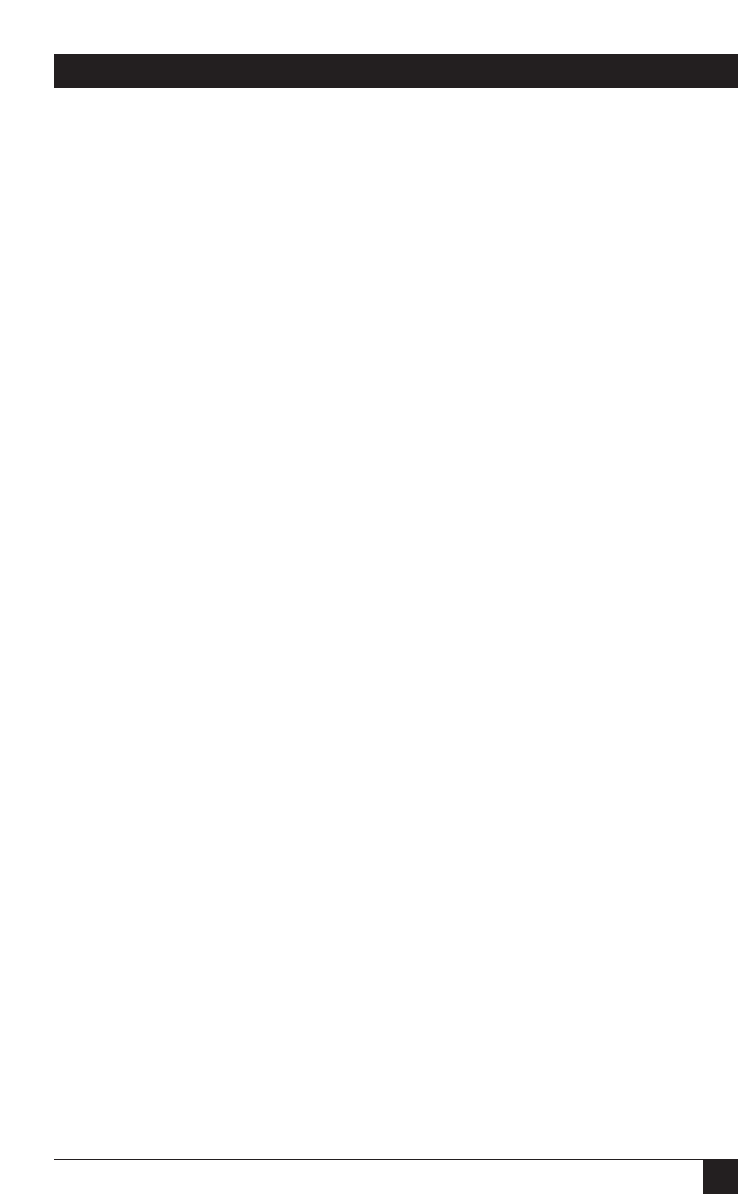
23
CHAPTER 4: Operation
4.6 Placing an Outbound Call
You can place an outbound call from the PHONE port, unless another port
is in use. If another port is in use, you will hear silence when you attempt to
place a call. If the line is clear when the calling device goes off-hook, you
receive a dial tone and can place the call normally.
During an outbound call, you can also receive a transmission from someone
that is ready to transmit.
To route this transmission to your FAX/MODEM port, any time during a
conversation, press # 9 9 from a tone phone, or 3 from a rotary/pulse dialing
phone (rotary/pulse transfers are not possible until 20 seconds after dialing
the last digit of the phone number).
Picking up an extension phone not connected to the TAD or PHONE port
during a data or fax transmission may interrupt the call.
4.7 Receiving a Computer Call
Unlike a fax call, inbound computer calls do not produce any tones; they
remain silent until another modem answers the call. Therefore, the caller
must use tones from a tone-type device that produces tones (for example,
a modem).
To receive a computer call to the FAX/MODEM port, instruct the caller
to use one of the following methods. (In this example, we use a modem).
4.8 Dialing the Destination (Receiving) Computer through the Originating
(Calling) Computer
To have the calling modem automatically “over dial” the FAX/MODEM port
access code and access the modem connected to the Line Share 120H, the
caller must take into consideration whether the call is local or long distance.
For remote access to the FAX/MODEM port on the Line Share 120H,
instruct the caller to use the following dialing string in the modem’s software:
ATDT (phone number),,,#99,#99,#99,#99
The calling modem picks up its phone line and dials the phone number.
The comma (,) tells the modem to wait about two seconds and then
repeatedly dial the access code.


















